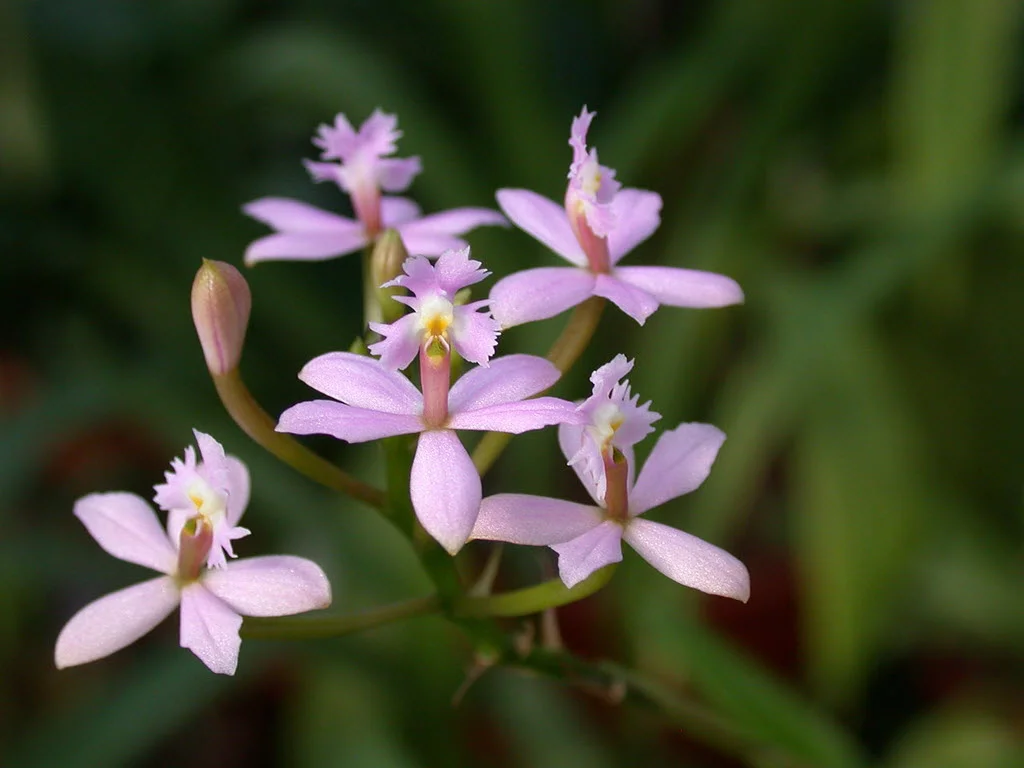Table of Contents
Pronunciation: as-koe-SEN-trum
Introduction
The Ascocentrum Orchid is part of the smaller Ascocentrum genus that contains around ten plants that are native to the Asian tropics.
This orchid is classified as a monopodial orchid, and this means that they lack traditional pseudobulbs and they grow from a single stem.
Ascocentrum Miniatum
The foliage on this orchid comes in the form of alternating strap-like leaves, and they produce bright, tight clusters of flowers that range in color from orange-red, bright fuchsia pink, and golden yellow.
This orchid's genus name comes from the Greek word that means 'bag' and 'spur' due to the distinct spur at the base of the plant's lip. It blooms in the late winter or early spring, but it's not uncommon for this orchid to have spikes year-round.
Temperature
To obtain optimal growth, try to mimic tropical temperatures with higher humidity. During the daytime hours, your temperatures should range between 75°F to 85°F (24°C to 29°C).
The nighttime temperatures can cool slightly to between 60°F to 70°F (15°C to 21°C) without an issue.
Although the Ascocentrum can tolerate colder temperatures, if you leave them exposed for long periods of time, you can significantly impact how well they grow or flower. If they're exposed to temperatures below 50°F (10°C), they can stop flowering for up to a year.
Light
Ascocentrum do extremely well in bright sunlight, and they tolerate strong, direct sunlight very well. If you expose your orchid to direct sunlight, you may notice that the leaves gain a darker pigmentation and freckles. This is normal, and it's nothing to worry about.
If you notice that your orchid's foliage is deep green, but it doesn't have any mottling, this could be a sign that it's not getting enough sunlight. You can supplement bright HID lights to stimulate your plant's growth.
Water and Humidity
Water your Ascocentrum daily, as they require high amounts of fast-draining water. If your orchid is potted in a hanging basket, water or mist it daily by soaking it, letting it dry for two or three minutes, and then soaking it again.
If your orchid starts dropping its leaves, it needs more water.
Ideally, humidity levels should be above 60%, but these orchids do very well in humidity levels up to 90% as long as they have good ventilation and airflow. Ideally, try to aim for a consistent humidity level of around 70%.
Feeding
During the spring and summer months while your orchid is growing, feed it weekly with a balanced fertilizer. In the fall and winter months, cut back on feeding to once every two weeks, and supplement a high pH fertilizer every fourth feeding.
Potting
The Ascocentrum Orchid likes open-air baskets with their bare roots exposed to the air and water. You can grow them in a net pot or a teak basket with no potting mix. You can also use a coarse mix of fir bark or wine corks. Growers also grow their orchids on hanging pieces of bark.
You can grow these orchids in containers as well, but it is critical that you use a very fast-draining soil mix. Your orchid should also completely dry between watering if they're in a container. If they stay damp, the roots can start to rot and die, and you can quickly lose your orchid.
Video
See the Ascocentrum with your own eyes in this short introductory video by OrchidWebTV. The host explains what the dark spots on your orchid actually mean.
You can find more monopodial orchids by browsing our comprehensive orchids list. Check it out next.











